#native plants of Ontario
Explore tagged Tumblr posts
Text
Native Plants I’ve Actually Seen Growing Wild in Southern Ontario
Acer saccharinum (silver maple) --along the sides of highways
Acer saccharum (sugar maple) --GTA ravines
Achillea millefolia (yarrow) --GTA ravines
Allium schoenoprasum (wild chives) --GTA ravines, Ridgetown
Allium tricoccum (ramps) --Niagara region escarpments
Amaranthus retroflexus (redroot amaranth) --fallow areas in the GTA
Ambrosia artemisiifolia (ragweed) --fallow areas in the GTA
Ambrosia trifida (giant ragweed) --parks in the GTA
Amelanchier spp. (saskatoon/serviceberry) --GTA ravines
Arisaema triphyllum (Jack-in-the-pulpit) --GTA ravines
Aronia melanocarpa (black chokeberry) --ravines and parks in the GTA
Asarum canadense (Canada ginger) --GTA ravines
Asclepias syriaca (common milkweed) --fallow areas, ravines, and parks throughout southern Ontario from Windsor to GTA
Asplenium trichomanes (maidenhair spleenwort) --Niagara region escarpments
Betula spp. (birch) --ravines and parks throughout southern Ontario from Windsor to GTA
Bidens spp. (beggar ticks) --GTA ravines
Caulophyllum thalictroides (blue cohosh) --GTA parks
Ceratophyllum demersum (hornwort) --GTA ravines (native in freshwater across the globe anyway)
Circaea lutetiana (enchanter’s nightshade) --fallow areas in the GTA
Commelina spp. (dayflower) --fallow areas in Windsor
Cornus alternifolia (Pagoda dogwood) --GTA wooded areas
Cornus sericea (red osier dogwood) --GTA ravines and in Windsor riverside parks
Crataegus spp. (hawthorn) --GTA ravines and parks
Echinocystis lobata (wild prickly cucumber) --GTA ravines
Elaeagnus commutata (silverberry) --GTA parks and fallow areas
Epilobium ciliatum (fringed willowherb) --fallow areas in the GTA
Equisetum spp. (horsetail/scouring rush) --GTA ravines and fallow areas
Erigeron spp. (fleabane) --GTA parks and fallow areas, Ridgetown
Erythronium americanum (trout lily) --GTA ravines and parks
Eutrochium maculatum (Joe-Pye weed) --GTA parks
Fragaria virginiana (wild strawberry) --fallow areas in the GTA
Geranium maculatum (wild geranium) --Windsor green spaces
Geranium robertianum (herb robert) --Windsor green spaces
Geum aleppicum (yellow avens) --GTA fallow areas
Geum canadense (white avens) --GTA fallow areas
Geum macrophyllum (large-leaved avens) --GTA fallow areas
Gymnocladus dioicus (Kentucky coffee tree) --GTA ravines
Helianthus spp. (sunflower) --GTA fallow areas and parks
Heracleum maximum (cow parsnip) --GTA ravines
Hordeum jubatum (foxtail barley) --GTA fallow areas
Humulus lupulus (hops) --GTA ravines
Hydrophyllum virginianum (Virginia waterleaf) --GTA ravines
Impatiens capensis (jewelweed) --GTA ravines and in Windsor riverside parks
Juglans nigra (black walnut) --GTA ravines
Lactuca canadensis (Canadian lettuce) --GTA fallow areas
Lilium michiganense (Michigan lily) --GTA ravines
Lupinus perennis (sundial lupine) --GTA parks
Maianthemum canadense (Canada mayflower) --GTA ravines
Maianthemum racemosum (starry false solomon’s seal) --GTA ravines and parks
Maianthemum stellatum (starry false solomon’s seal) --GTA ravines
Matteuccia struthiopteris (ostrich fern) --GTA ravines
Monarda fistulosa (wild bergamot) --GTA ravines and parks
Morus rubra (red mulberry) --fallow areas in Windsor, GTA parks
Myosotis laxa (smallflower forget-me-not) --GTA fallow areas
Oenothera biennis (evening primrose) --GTA fallow areas
Onoclea sensibilis (sensitive fern) --GTA ravines
Oxalis stricta (yellow wood sorrel) --fallow areas and ravines throughout southern Ontario from Windsor to GTA
Parietaria pensylvanica (Pennsylvania pellitory) --GTA fallow areas
Parthenocissus quinquefolia (Virginia creeper) --Windsor fallow areas and GTA ravines and parks
Persicaria lapathifolia (curlytop smartweed) --GTA fallow areas
Podophyllum peltatum (mayapple) --GTA ravines and parks
Portulaca oleracea (purslane) --fallow areas throughout southern Ontario from Windsor to GTA (native globally anyway)
Potentilla norvejica monspeliensis (ternate-leaved cinquefoil) --GTA fallow areas
Prunella vulgaris (selfheal) --fallow areas and ravines throughout southern Ontario from Windsor to GTA
Prunus virginiana (chokecherry) --Windsor fallow areas, GTA ravines and parks, Niagara region escarpments
Pteridium aquilinum latiusculum (western bracken fern) --GTA parks
Quercus spp. (oak) --wooded areas throughout southern Ontario from Windsor to GTA
Rhus typhina (staghorn sumac) --parks and fallow areas throughout southern Ontario from Windsor to Collingwood
Ribes spp. (currants) --GTA ravines and parks
Ribes spp. (gooseberries) --GTA ravines
Robinia pseudoacacia (black locust) --GTA ravines and parks
Rosa spp. (roses) --GTA ravines, parks, and fallow areas
Rubus occidentalis (black raspberry) --ravines, parks, and fallow areas in Hamilton and GTA
Rubus odoratus (purple-flowered raspberry) --GTA ravines and parks
Rubus strigosus (American red raspberry) --GTA parks
Rudbeckia hirta (black-eyed susan) --GTA parks
Salix spp. (willow) --GTA ravines
Sambucus canadensis (common elderberry) --Windsor riverside parks, GTA ravines
Sambucus racemosa (red elderberry) --GTA ravines and parks
Smilax spp. (greenbrier) --GTA parks
Solidago canadensis (Canada goldenrod) --parks and fallow areas throughout southern Ontario from Windsor to GTA
Sorbus spp. (mountain ash) --GTA ravines and parks
Streptopus spp. (twistedstalk) --GTA parks
Symphoricarpos spp. (snowberry) --GTA parks
Symphyotrichum ericoides (heath aster) --fallow areas throughout southern Ontario from Windsor to GTA
Symphyotrichum novae-angliae (New England aster) --fallow areas throughout southern Ontario from Windsor to GTA
Symplocarpus foetidus (skunk cabbage) --GTA parks
Tilia spp. (linden) --GTA ravines
Trillium grandiflorum (white trillium) --parks throughout southern Ontario from Windsor to GTA
Tsuga canadensis (eastern hemlock) --GTA parks
Typha latifolia (broad-leaved cattail) --marshes in Essex county and GTA
Urtica gracilis (slender nettle) --GTA ravines
Uvularia spp. (bellwort) --streams in Windsor green spaces
Verbena hastata (blue vervain) --GTA ravines
Viburnum lentago (nannyberry) --GTA parks and Ridgetown ravine
Viburnum trilobum (highbush cranberry) --Ridgetown
Viola sororia (wood violet) --fallow areas and wooded areas throughout southern Ontario from Windsor to GTA
Vitis riparia (riverbank grape) --GTA fallow areas, ravines, and parks
Waldsteinia fragarioides (barren strawberry) --GTA ravines and parks
Xanthium strumarium canadense (Canada cocklebur) --GTA parks and fallow areas
I’ve likely seen many others and just couldn’t identify them, but there are a lot I’ve never seen growing wild. What I’m hoping is that some of the native species I have in my garden will make their way to the nearby ravine. If I get around to it, though, I might just take a walk with some Asclepias incarnata (swamp milkweed) seeds in the fall. They certainly seem to successfully germinate in my garden whether I want them to or not (don’t have space for them to go crazy). Can’t see why they wouldn’t in a natural swamp area.
#text post#long text post#native plants of Ontario#native plants of North America#wild native plants
10 notes
·
View notes
Text

Trillium in the rain
#ontario#original photographers#nature#nature photography#beautiful#walking in nature#hiking trail#hiking#flowers#floral#white floral#white flowers#trillium#native plants#wildflowers#plant photography#plants#forest#trees and forests#art#artists on tumblr#artwork#my art#nature photo art#photograph#female photographers#nature photoshoot#original photography on tumblr#photographers on tumblr#photography
24 notes
·
View notes
Text
Native plant enthusiasts in Ontario, Canada, this is for you.
Leaving Facebook, I miss the Ontario Native Plant Gardening group. I couldn't find any communities on alternative social media so I'm working on making my own. Although Facebook will always be the mecca for the older generation of gardeners, I think it's worth forging some communities elsewhere, even if they're smaller, for those of us who deleted Meta apps. There's benefits to small communities, too, like less off-topic spam and less bad advice.
The Goal:
To create a space to share pictures, information, resources, news, and ask questions, get advice, help newbies get started, and trade seeds and plants, specific to PLANTS NATIVE TO ONTARIO, CANADA.
Gardening of highly cultivated or exotic plants (e.g., most garden veggies and herbs) is off-topic; while it may be discussed incidentally, posts/activity that is totally focused on it will be removed. Discussion of removing invasive plants is also allowed, while promoting the planting of invasive plants is not allowed.
Links:
Discord: DM me (@vormoranox) for link because I don't want to invite bot spam by posting it widely here.
BlueSky "custom feed" (like it and pin it): https://bsky.app/profile/did:plc:c4bxovkrkuszkrw6m25tyiix/feed/aaac75apohl
Reddit (VERY barebones as of Feb 2025, setting up a subreddit is kind of crazy and I've only basically picked the name and effectively nothing else and I'm very new to this): /r/OntarioNativePlants








#Canada#Ontario#Ontario Native Plants#Native plants#Native plant gardening#Ontario native plant gardening#Gardening#Pollinator gardening#Pollinators#Native species#Ontario Canada#buy Canadian#Plant and seed exchange#Ecology#Supporting pollinators#Habitat gardening#Eco friendly gardening#Pollinator habitat#Ontario species#Canadian species#Ontario plants#Ontario gardeners#Gardeners#Canadian gardeners
3 notes
·
View notes
Text
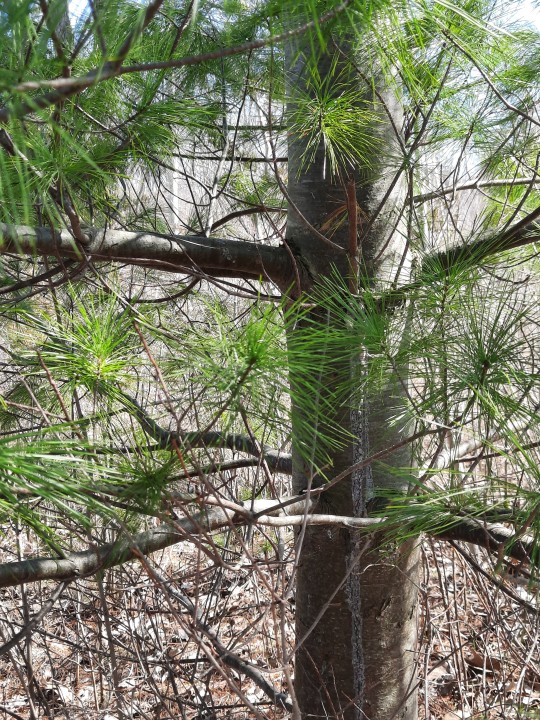
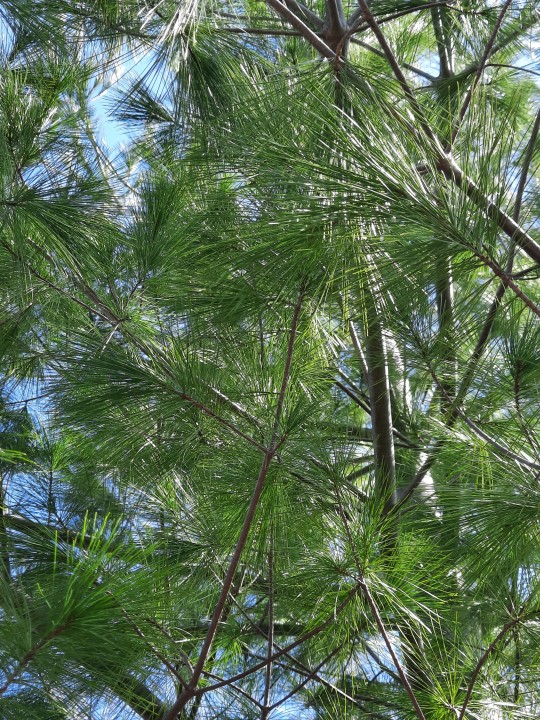


for the life of me I can't figure out what kind of tree this is. I thought *maybe* white pine? But the bark is almost like a shiny silvery colour. Found in southern Ontario, Canada.
7 notes
·
View notes
Text
"In 2021, scientists in Guelph, Ontario set out to accomplish something that had never been done before: open a lab specifically designed for raising bumble bees in captivity.
Now, three years later, the scientists at the Bumble Bee Conservation Lab are celebrating a huge milestone. Over the course of 2024, they successfully pulled off what was once deemed impossible and raised a generation of yellow-banded bumble bees.
The Bumble Bee Conservation Lab, which operates under the nonprofit Wildlife Preservation Canada, is the culmination of a decade-long mission to save the bee species, which is listed as endangered under the Xerces Society for Invertebrate Conservation...
Although the efforts have been in motion for over a decade, the lab itself is a recent development that has rapidly accelerated conservation efforts.
For bee scientists, the urgency was necessary.
“We could see the major declines happening rapidly in Canada’s native bumble bees and knew we had to act, not just talk about the problem, but do something practical and immediate,” Woolaver said.
Yellow-banded bumble bees, which live in southern Canada and across a huge swatch of the United States, were once a common species.

However, like many other bee species, their populations declined sharply in the mid-1990s from a litany of threats, including pathogens, pesticides, and dramatic habitat loss.
Since the turn of the century, scientists have plunged in to give bees a helping hand. But it was only in the last decade that Woolaver and his team “identified a major gap” in bumble bee conservation and set out to solve it.
“No one knew how to breed threatened species in captivity,” he explained. “This is critically important if assurance populations are needed to keep a species from going extinct and to assist with future reintroductions.”
To start their experiment, scientists hand-selected wild queen bees throughout Ontario and brought them to the temperature-controlled lab, where they were “treated like queens” and fed tiny balls of nectar and pollen.
Then, with the help of Ontario’s African Lion Safari theme park, the queens were brought out to small, outdoor enclosures and paired with other bees with the hope that mating would occur.
For some pairs, they had to play around with different environments to “set the mood,” swapping out spacious flight cages for cozier colony boxes.
And it worked.
“The two biggest success stories of 2024 were that we successfully bred our focal species, yellow-banded bumble bees, through their entire lifecycle for the first time,” Woolaver said.
“[And] the first successful overwintering of yellow-banded bumble bees last winter allowed us to establish our first lab generation, doubling our mating successes and significantly increasing the number of young queens for overwintering to wake early spring and start their own colonies for future generations and future reintroductions.”
Although the first-of-its-kind experiment required careful planning, consideration, resources, and a decade of research, Woolaver hopes that their efforts inspire others to help bees in backyards across North America.
“Be aware that our native bumble bees really are in serious decline,” Woolaver noted, “so when cottagers see bumble bees pollinating plants in their gardens, they really are seeing something special.”"
-via GoodGoodGood, December 9, 2024
#bees#insect#save the bees#xerces society#biodiversity#conservation#endangered species#wildlife conservation#canada#north america#climate action#climate news#good news#hope
6K notes
·
View notes
Text
Flower Bed - Landscape

Image of a sizable farmhouse's side yard flower bed in full sun.
#hastings county#flower bed#butterfly garden#picton#permaculture#prince edward county#native ontario plants
0 notes
Text
Dandelion News - November 22-28
Like these weekly compilations? Tip me at $kaybarr1735 or check out my Dandelion Doodles!
1. Los Angeles becomes a sanctuary city for LGBTQ+ youth and immigrants as officials reject Project 2025
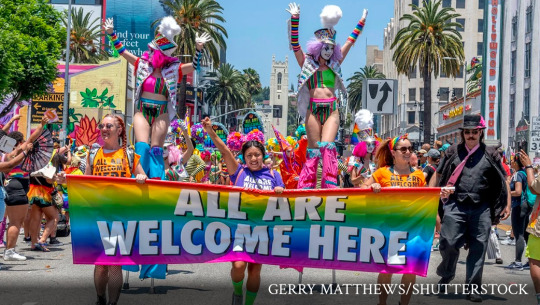
“The Los Angeles City Council voted unanimously Tuesday to pass the “sanctuary city” ordinance, shielding queer youth who travel to the city to receive gender-affirming care from prosecution, as well as preventing city resources from being used in immigration enforcement[….]”
2. Huge deforested areas in the tropics could regenerate naturally, study finds

“Cleared or degraded tropical forests around the world covering a combined area larger than Saudi Arabia could regrow on its own, according to new research published Oct. 30 in the journal Nature. [… T]he permanence of regrown forests is critically important to the benefits it can provide to biodiversity and the climate.”
3. Minnesota tribe could soon get a solar-powered resilience hub

“A pair of developers are working to build a microgrid at an elementary school and community center on the White Earth Reservation in northern Minnesota [… which would] provide about 12 hours worth of backup power for residents to be able to charge cell phones, power medical equipment, or stay warm in the event of a power outage.”
4. An exchange between Indonesia and Tanzania supports food security and ocean health
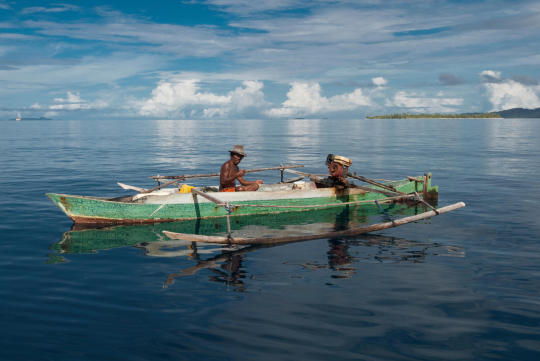
“Around the world, WWF helps manage […] both traditional sustainability-oriented management and science-based practices. This combination supports long-term food security and biodiversity goals. […] Local ownership and management are […] key to achieving stable fisheries and social and economic benefits.”
5. Spiky blue devils and chocolate lilies: Victorian grassland bursts with wildflowers after ecological ‘reset’

“About 70 native plant species could be found within the site, including […] four endangered species of orchid. […] Careful management, including an ecological burn in May and weed control measures to reduce pasture grasses, laid the groundwork for wildflowers to thrive.”
6. Vast forests, wetlands and lakes conserved [in Ontario]

“A vast 970-hectare area featuring thriving forests, wetlands and crystal-clear lakes northeast of Sault Ste. Marie is now protected[….] The intact forests, lakes, wetlands and shorelines support high biodiversity and are home to many threatened species[….]”
7. A New Era of Compassion: How Suncoast Humane Society is Changing Animal Welfare for Good
“Our campus includes outdoor play areas, trails, and even a small swimming pool to encourage animals to stay active, explore, and simply be themselves.”
8. Building climate resilient cocoa farming in West Africa
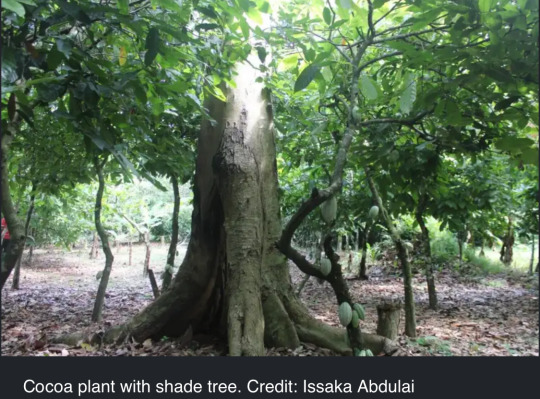
“[… A] promising new approach to improve climate resilience in cocoa agroforestry across West Africa […] focuses on the critical role of leaf "phenology"—the seasonal changes in leaf cycles—in trees providing shade in managing climate impacts. [… S]hade trees that lose their leaves entirely during the dry season proved especially beneficial in maintaining soil moisture[….]”
9. New Zealanders save more than 30 stranded whales by lifting them on sheets
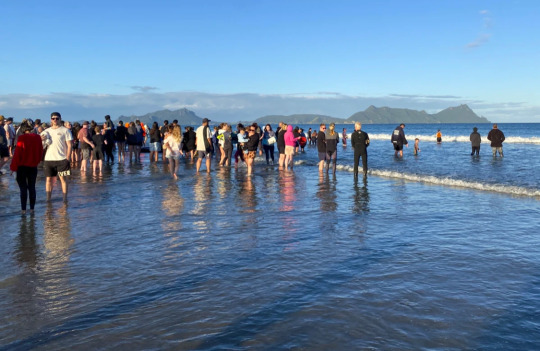
“[The Department of Conservation] praised as “incredible” the efforts made by hundreds of people to help save the foundering pod. “It’s amazing to witness the genuine care and compassion people have shown toward these magnificent animals[….]””
10. 'A really sobering moment:' English zoo fights extinction of freshwater Boxer pupfish

“Whipsnade Zoo aquarists were recently told by conservation partners that that the world's last remaining Boxer pupfish was in their care, prompting the zoo to carry out the immediate transport of all the "precious" Boxer pupfish eggs to another local conservation and education charity in the name of species preservation.”
November 15-21 news here | (all credit for images and written material can be found at the source linked; I don’t claim credit for anything but curating.)
#hopepunk#good news#los angeles#us politics#lgbt+#immigrants#deforestation#nature#minnesota#native american#indigenous#electricity#solar panels#solar energy#solar power#ocean#fishing#food insecurity#wildflowers#native wildflowers#native plants#conservation#canada#animal shelters#humane society#agroforestry#new zealand#whale#fish#endangered
126 notes
·
View notes
Text
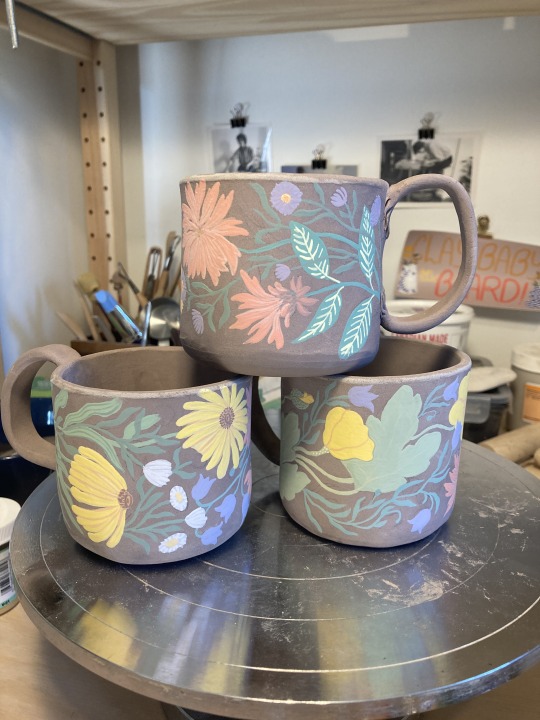

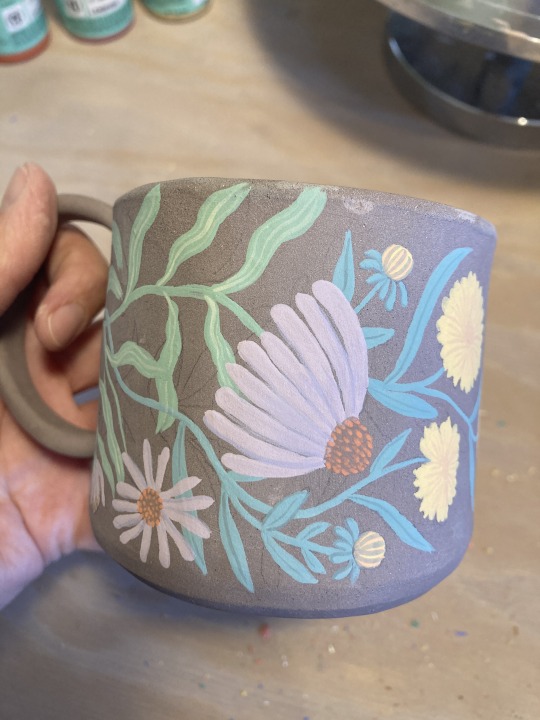


I've developed a passion for native plants the last couple years (since my partner & I got a house with a mostly un-landscaped yard & we started gardening in it) & I thought these black clay mugs were the perfect place to paint some of my favourite native-to-Ontario flowers!
These took FOREVER, but I'm so thrilled with how they turned out - hopefully they fire well & look this vibrant once they're all done!?!
#artblog#ceramicsculpture#ceramicart#handbuiltceramics#sculptures#handbuiltsculpture#pottery#clay#stoneware#sculpting#sculpture#handbuilding#ceramic#ceramics#handbuilt mug
479 notes
·
View notes
Photo
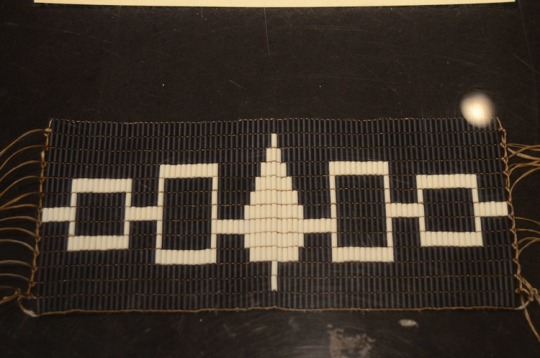
Origins of the Haudenosaunee (Iroquois) Confederacy
The Haudenosaunee, also known as the Iroquois Confederacy, Iroquois Five Nations, or the Iroquois League, was one of the most powerful Native American polities north of the Rio Grande. They arrived in the historical record in the 16th-century CE when European colonists began interacting with the Haudenosaunee's five constituent nations – the Onondaga, Mohawk (who called themselves the Kanienkehaka), Cayuga, Oneida, and Seneca – in both war and trade. The Haudenosaunee as a nation had a huge impact on the colonial and revolutionary, and Early Republic eras of the United States as well as on the early history of Canada – not to mention their importance in indigenous geopolitics before and after European colonization of the Americas.
Despite their importance to history, how and when the Huadensaunee confederacy began has become a matter of much debate over the decades. The Haudenosaunee themselves have a long-standing oral tradition that describes the origins of their famed confederacy, as well as the constitution the five nations created upon forming this league. Yet, this tradition gives no indication as to the exact year these events occurred. In an attempt to shed light on the matter, many scholars have turned to archaeology and clues hidden in the historical record to determine the date the Haudenosaunee formed.
Hiawatha & the Great Peacemaker
According to Haudenosaunee oral histories, a long time ago, the nations that would one day form their confederacy were at constant war with one another. A Seneca man named Hiawatha lost his wife and daughters to this violence. Inconsolable, he began to wander, and somewhere in the Kanienkehaka's territory, he came across a man named Dekanawida.
Known as the Great Peacemaker, Dekanawida is credited with the vision of uniting the Iroquois nations and bringing peace to their lands. Like many prophets throughout history, the historical figure of Dekanawida has had many miracles attributed to him. According to tradition, prior to his birth, Dekanawida's mother received a vision in a dream that she would conceive a son and he would go on to plant the Great Tree of Peace. Nine months later, still a virgin, she gave birth to Dekanawida. Worried about the child's seemingly supernatural provenance, Dekanawida's grandmother urged her daughter to kill him. Though they tried to drown the infant twice, he returned both times.
While we know very little of the historical Dekanawida, it is clear that he was not Haudenosaunee by birth. Born in the Wendat Nation of southern Ontario, Dekanawida seems to have left his home for reasons unknown. When he enters the story of the Great Peace, we find him living with the Kanienkehaka, the easternmost of the Haudenosaunee nations, where he meets Hiawatha.
When Dekanawida saw the grief from which Hiawatha suffered, he offered to help, performed what would come to be known as the condolence ceremony; first drying the eyes of the weeping Hiawatha, then opening the ears of the grieving man, and lastly, clearing Hiawatha's throat. Now able to see, hear, and speak, Hiawatha could take in and understand Dekanawida's vision for a great peace, and the two men then set out together to spread the word.
Continue reading...
54 notes
·
View notes
Text
Virginia Bluebells (Mertensia virginica)
Blue flowers are relatively rare. Most incline to violet or else are quite small. But Virginia bluebells are a striking exception. All my photos from my garden, unedited.
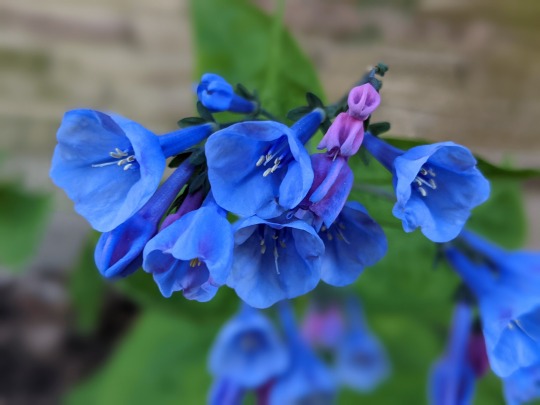

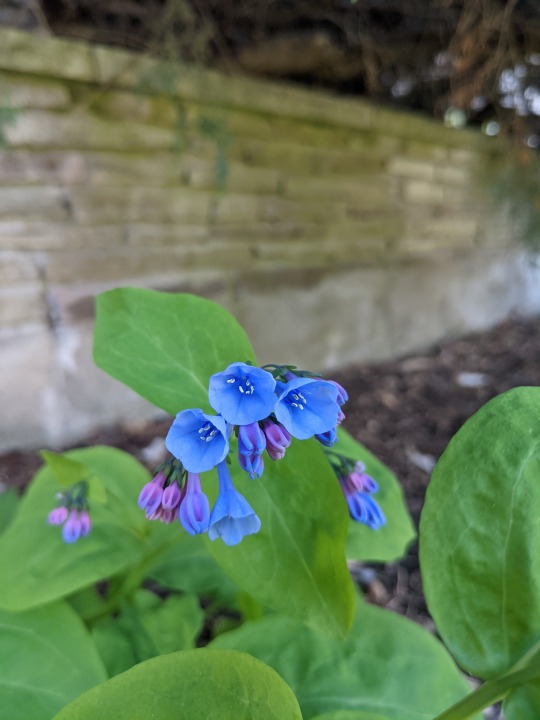
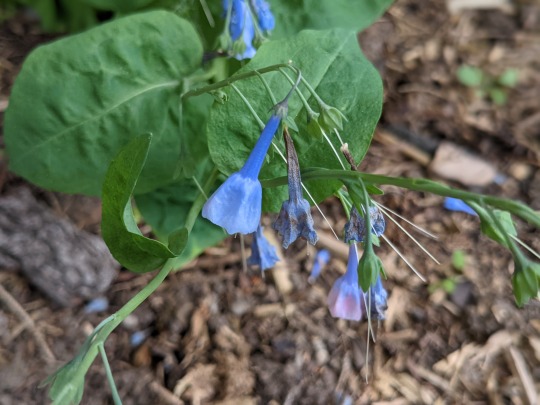
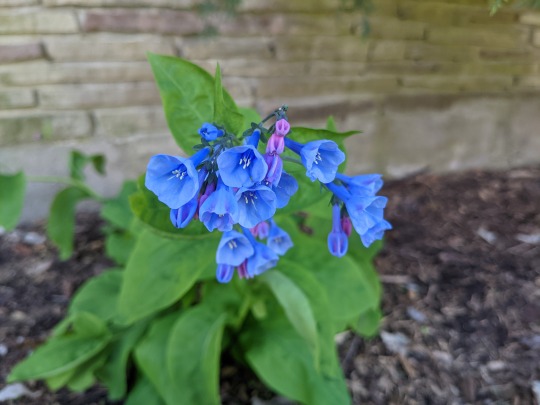

I'm not kidding. They really are that blue naturally. They bloom in May. Then they slowly decline and the entire plants are gone above soil by the summer. Only to reappear the following spring! The shoots and flower buds are edible. You don't want to take too much, though. As spring ephemerals, they need the energy they make with their leaves during their short growing period. The short bloom period is also why I don't have more photos of them. They don't even bloom every year.
#photography#my photos#blackswallowtailbutterfly#Virginia bluebells#Mertensia virginica#flowers#blue flowers#wildflowers#gardening#native species#North American native plants#edible wild plants#my garden#native plants of Ontario and the northeastern USA#spring ephemerals
23 notes
·
View notes
Text
Blog 3: Privilege in Nature Interpretation
After reading the content in unit 3, I think of privilege as the advantages or benefits afforded to individuals or groups based on characteristics such as race, gender, or socioeconomic status. These advantages often shape one’s experiences and opportunities, not from their abilities, competencies, decisions, or actions but rather from their position or social identity. In the context of nature interpretation, privilege may impact who has access to natural spaces and education, whose stories are told, and how these stories are framed.
Nature interpreters often reflect the dominant culture’s perspectives, privileging certain voices over others. For example, Indigenous peoples often find their knowledge overshadowed by Western scientific narratives. Privilege influences which stories are amplified, and this may result in a misrepresented interpretation of historic and cultural relationships with nature.
I have experienced this firsthand as a Wildlife Biology and Conservation major, where most classes focus solely on technical aspects and new research. While these are important, they often fail to incorporate Indigenous perspectives and knowledge. Why would this be important? I think incorporating Indigenous knowledge is essential for fostering a more holistic understanding of ecosystems, ensuring that our education is inclusive, teaches us about the history of our land, and is respectful of traditional ecological wisdom.
I worked at the Royal Botanical Gardens in Burlington, Ontario for two summers as a visitor experience representative. I had the privilege of having access to all the gardens, trails and visitor centres within the property. One of my favourite trails is called “Enji naagdowing Anishinaabe waadiziwin”, which translates to “The Journey to Anishinaabe Knowledge”. This trail, developed in partnership with the Mississaugas of the Credit First Nation, invites hikers to explore the connections between plants and Anishinaabe culture. Informative signs placed along the trail provide insight into how the Anishinaabe people traditionally used various plants for medicine, food, and cultural practices.

I admire the RBG’s commitment to incorporating Indigenous history, stories and ways of living into their interpretation. This approach goes beyond simply showcasing the beauty of the area, it helps to give a voice to the often overshadowed Indigenous peoples, and a meaningful platform for their important stories to be told.
The RBG website captures this idea by sharing the words of Joseph Pitawanakwat, a plant educator from Wikwemikong Unceded Nation:
“In my Anishinaabe culture and tradition, we teach that every plant is telling you a story, and in that story, the plant is teaching why it is here, its purpose — all we have to do is listen... Scientists are also testing Indigenous medicine plants and discovering active compounds that legitimize their use. As you walk this trail, you’ll see examples of how this works, some easy to spot, and some hidden in the plants.”
This quote highlights the importance of listening to not only plants, but also the wisdom of Indigenous communities, in order to deepen our understanding of the natural world and progress modern science.
Recognizing privilege in nature interpretation is important for ensuring equitable and accessible education for all. I encourage readers to reflect and answer the question: How can you actively work to dismantle privilege and ensure an equal platform for all in your nature interpretation career?
Royal Botanical Gardens. (n.d.). Indigenous plant medicines trail. Retrieved January 21, 2025, from https://www.rbg.ca/gardens-trails/by-attraction/trails/indigenous-trail/
10 notes
·
View notes
Text
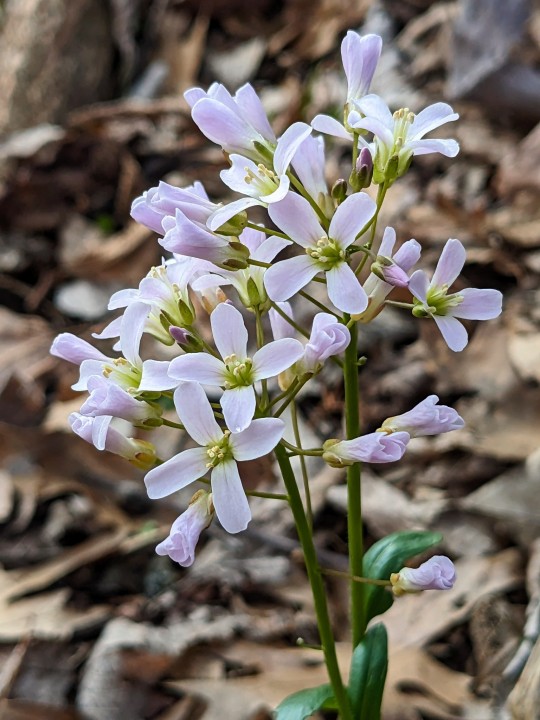

Purple Cress
Cardamine douglassii
Also known as Limestone Cress, this species in the mustard family features clusters of light purple flowers in early spring and can be found in wet and swampy forests with calcium carbonate rich soils. It's native to parts of the eastern United States and southern Ontario, Canada.
The plants I photographed are part of an isolated population remaining in a tiny bottomland forest remnant in St. Charles County, Missouri. Unfortunately, the rest of the forest has been lost due to suburban sprawl and what little of it remains has many invasive species, including winter creeper, callery pear, and japanese honeysuckle trying to encroach from surrounding developments and outcompete native plants like this one.
March 12th & 13th, 2024
St. Charles County, Missouri, USA
Olivia R. Myers
@oliviarosaline
#botany#cardamine douglassii#cardamine#purple cress#bittercress#brassicaceae#nature#naturecore#forest#fairycore#woods#missouri#native plants#native flowers#forests#hiking missouri#suburban sprawl#urban sprawl#ecology#plants#flowers#wildflowers#purple flowers#native plants of america#forest floor#bottomland woods#bottomland forests#nature photography#flower photography#spring
37 notes
·
View notes
Text
One of my favorites that I call my forest herb.

Chimaphila maculata is an evergreen Shrub growing to 0.3 m (1ft) by 0.5 m (1ft 8in) at a slow rate.
Other names are Spotted Wintergreen and Pipsissewa.
Native to Eastern N. America - Illinois to Michigan and Ontario, south to Texas and Georgia.
The plant is analgesic, antibacterial, astringent, diaphoretic, diuretic, febrifuge, rubefacient, stimulant and tonic. The plant has an antiseptic influence on the urinary system and is sometimes used in the treatment of cystitis. An infusion of the plant has been drunk in the treatment of rheumatism and colds. A poultice of the root has been used to treat pain whilst the plant has also been used as a wash on ulcers, scrofula and cancers. All parts of the plant can be used, though only the leaves are officinal. The plant is loaded with the biologically active compounds arbutin, sitosterol and ursolic acid.
#atlanta airbnd experience#herbs#plants#visionarygrowingsolutions#Chimaphila maculata#Spotted Wintergreen#airbnb experience#pipsissewa#atlanta urban ag#maurice small
25 notes
·
View notes
Text
Blog 1: Connected to Nature
Hello, ENVS*3000 friends! I'm Maia, and I am in my third year of Biological Sciences. Welcome to my first blog :)
I would describe my current connection with nature as a profound yet carefree essence. I come from the city, more precisely, North Toronto; I found myself yearning for nature's embrace from a young age, perhaps triggered by its scarcity in my urban surroundings. Recognizing my affinity, my dad, a nature enthusiast, actively fueled my passion through camping adventures, hiking escapades, and shared moments immersed in captivating David Attenborough documentaries. In the midst of a large Italian family, where the majority remained indifferent to the natural world, I stood out as the quiet one, the nature lover, aspiring Dr.-to-be. Amidst this, my dad became my reliable support, sharing the same passion for the great outdoors. His passion for wildlife and landscape photography became a shared pursuit, complete with my very own camera.
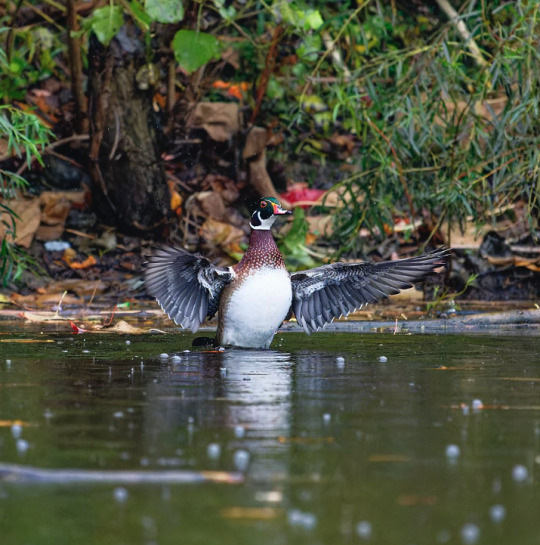
Photo of a male wood duck shot by Dino Melissa
Despite a bustling upbringing as a competitive dancer for 17 years—which is not exactly an outdoor sport—I surrounded myself with nature books, my dad's photographs, and nature documentaries. Unfortunately, while balancing a hectic city life, the opportunities for my dad and I’s outdoor adventures diminished over the years. However, as I am maturing and expanding my knowledge, I continuously discovered new ways to appreciate nature and its interconnected web of life - not mosquitoes though…
In my quest to inspire others to view nature through a similar lens as I do, I spent the past summer at a wildlife hospital, manning the front desk. Handling cases ranging from fallen hawks to orphaned baby raccoons to pigeons with string around their feet, I strived to educate callers about wildlife while debunking misconceptions. Some common ones are that pigeons are dirty and will give us diseases, and snakes are evil - spoiler alert, both are very wrong! While not everyone appreciated or grasped the educational aspect—some mistaking us for pest removal—many left with a newfound understanding of Ontario's wildlife. Small changes, after all, contribute to a broader impact of protecting our native species. This job expanded my knowledge - which I still try to share with anyone who will listen - and played a pivotal role in further evolving my relationship with nature.
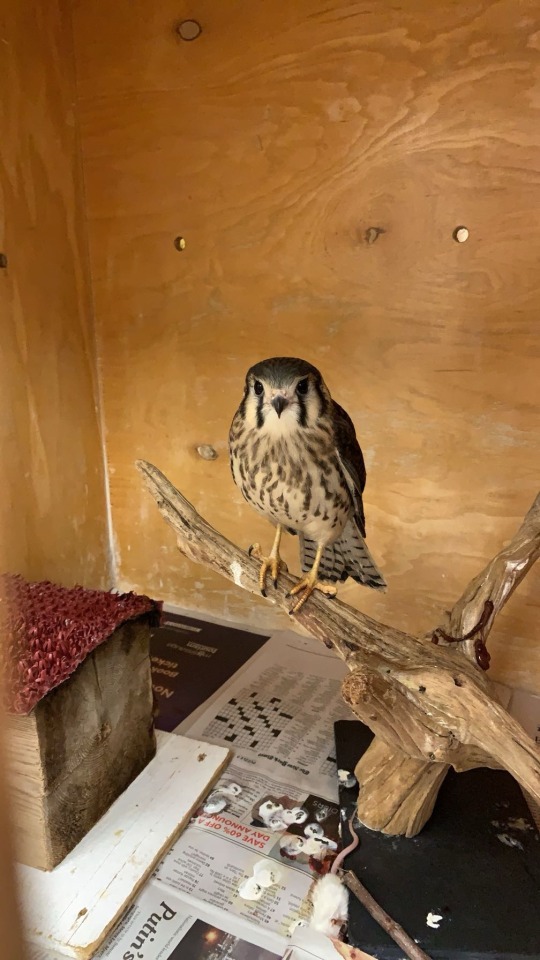
Picture of an American Kestrel
One place that has bestowed upon me a profound sense of place is my cottage—a haven of tranquillity like no other. Nestled on about an acre of land, backing onto a forest, it teems with diverse wildlife such as deer, coyotes, foxes, turkeys, grouse, and a plethora of native plants. Whether quietly observing the tree line or engaging in summer activities like kayaking and hiking, the ambient sounds of water, wind, and nature's symphony create a genuine sense of place; whenever I am there I feel as if I belong there. It's here that I yearn to escape city living permanently, trading it for the allure of a rural plot of land to live off of sustainably.

Picture of the backyard during the winter
The dream of owning a small farm and caring for animals has been a lifelong goal of mine. The charm of sustainable living intertwines with my passion for nature; here is where I hope to coexist in harmony. Through responsible practices and a deep connection with nature, I aim to contribute to the preservation of the natural world, all while feeling a permanent sense of place like no other.
21 notes
·
View notes
Text
Blog 3: Role of privilege in nature interpretation
Privilege can be defined as something that provides advantages without being noticed by the person that has them. When I first started reading this unit, I realized that I have never thought about how privilege could play a role in nature interpretation. Privilege affects everyone and is often invisible, meaning that we can all be guilty of overlooking it. It provides groups of people with advantages that others may not have. While studying this unit, I found the backpack metaphor helpful in relating privilege to this course. Another metaphor compared privilege to a bubble; just like bubbles in a champagne glass, privilege is nearly invisible, rises to the top, and cannot be entirely avoided (Reagle J). Viewing privilege in this way helped me understand how it influences who feels welcome and included in natural spaces.
Economic privilege is a widely discussed form of privilege that we encounter daily. I often think about how different wealth statuses provide certain advantages or disadvantages, and unfortunately these inequalities extend to nature interpretation. Park entrance fees, transportation costs, and the expense of outdoor gear are all barriers that can prevent someone from enjoying nature. While nature is typically viewed as free and accessible to everyone, these costs create a barrier preventing it from being equally available to everyone. For instance, I think back to camping trips with my family when I was a child. The three-hour drive to the campsite, the cost of gear and food, and the park fees all added up. Looking back, I realize how fortunate I was to have those experiences, knowing that many people cannot afford such opportunities. In my hometown of Dundas Ontario, there are many waterfalls I used to visit as a kid. They always free to explore, with no cost for parking or entrance. In recent years, however, entrance fees and parking charges have been introduced, creating a barrier for individuals. This has been upsetting to witness because it excludes those who may not have the financial means to enjoy these spaces.
Another over-looked privilege in nature interpretation is language. As someone who speaks English, the most widely used language in the world, I rarely face barriers when engaging in natural spaces. Signs, guided tours, and educational materials are predominantly offered in English, which can exclude individuals who speak other languages. This is something I have never reflected on before because it’s a barrier I’ve never encountered. For example, on hikes, trail signs might describe the local flora and fauna and interpretive materials in parks often share the history of the area. Language barriers can not only diminish the experience but also pose safety risks, such as when signs warn about dangerous animals or poisonous plants. For non-English speakers, these gaps in communication can prevent them from fully connecting with and enjoying the natural world.
One way to address this issue is to offer pre-recorded audio guides or written descriptions in multiple languages. These resources would make nature interpretation more inclusive and encourage everyone (regardless of their native language) to explore and learn about nature’s wonders. Personally, I’ve travelled to many parts of the world and visited natural sites where I was able to fully participate because resources were offered in English. This privilege is something I’ve often taken for granted.
Reflecting on privilege in nature interpretation has been eye opening. It’s easy to overlook the ways in which systems and structures cater to those who already hold certain advantages. By acknowledging these privileges and striving to address issues related to safety, finances, and language, we can create more inclusive environments for nature interpretation. Doing so will give more people the opportunity to connect with the natural world and share in its beauty.
Reagle, J. (n.d.). Open codex code & culture. Open Codex Atom. https://reagle.org/joseph/pelican/social/the-metaphors-of-privilege.html
5 notes
·
View notes
Text

Mab’s Drawlloween Day 12: Toad
My favourite toad is the Fowler’s toad (Anaxyrus fowleri), a little poisonous toad native to eastern North America. According to field guides and conservationists it’s not supposed to be in Ontario past Lake Erie, but I see it all the time in the Ottawa Valley. A lot of critters (and plants and fungi) are moving up here due to climate change and habitat encroachment.
I don’t just love toads because they’re poisonous, I love them because they are perfect. They haven’t needed to evolve in millions of years. They are “sit and wait” hunters, similar to spiders that are ambush predators. They just chill in the dirt and dead leaves and wait for food to come to them. Their whole life is “just bugs”. The creators of “work smarter, not harder”. They have a lot to teach us about patience, strategy, playing dumb, and doing well despite being lazy. Role model material, honestly.
#bane folk#toads#fowler’s toad#anaxyrus fowleri#poisonous animals#poison path fauna#poison path#inktober#mabsdrawlloweenclub#mabsdrawlloween2023#mdwc23#mdwc23d12
30 notes
·
View notes